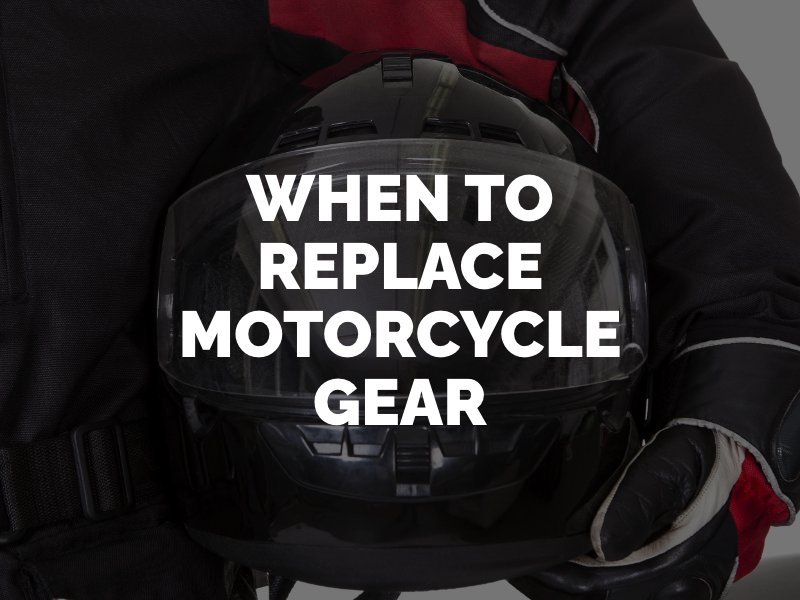How Often to Replace Motorcycle Gear
As a motorcyclist, the only protection from injury you have in an accident is the gear you choose to wear. For the most effective crash safety, it is critical to know how old your gear is and when to replace it for optimal protection. After a motorcycle accident, for example, replacing gear is important, as it may have sustained damage that compromises its effectiveness. Let our Los Angeles motorcycle accident attorney recover damages to your gear after a collision.

Helmet: 3-5 Years or After an Accident
The Snell Memorial Foundation states that motorcycle helmets that are used regularly should be replaced at least every five years, while other authorities place the timeline closer to three years. Over time, normal wear and tear will alter the comfort pads and foam liner, which is designed to absorb energy from an impact. Worn-out pads create a risk of injury by changing the shape and fit of the helmet, making it looser than it should be on the wearer’s head. If you are involved in an accident where your helmet comes into contact with any object, vehicle or surface, it is important to replace the helmet as soon as possible. A crash can compromise a motorcycle helmet by creating cracks or chips, making it less effective in a subsequent accident. Even if you don’t see any visible damage, the interior elements of the helmet may be compromised.
Jacket, Vest or Jeans: 5 to 20 Years
Motorcycle safety gear designed for the body – jackets, vests and pants – should be replaced when the material used gets worn out from normal wear or accidents. Protective materials do not last forever. Over time, even without accidents, they begin to lose their ability to protect the wearer from abrasion, impact and the elements. The average timeline of motorcycle gear changes according to the material:
- Textiles (Dyneema, Kevlar or Cordura): 5 to 10 years
- Cotton: up to 10 years
- Leather: 10 to 20 years (or longer with proper care)
Look for signs of wear in your gear to determine when it needs to be replaced. Examples include thinning or creased protective pads, worn-out fasteners (this can prevent protective areas from sitting in the right places), reflective elements that no longer work, and waterproofing that is leaking or ineffective. If you get into a motorcycle accident, it is wise to replace your gear, as abrasions will wear down the material.
Gloves: Every 12,000 Miles
Unlike other types of motorcycle gear, gloves are in constant contact with the bike while riding. This means they will deteriorate at a rate that matches the amount of use. The right time to replace a pair of motorcycle gloves depends on how often you ride. Check your gloves for signs of the material thinning, especially on the palms. When they reach about 50 percent of what they were when new, it’s time to replace them. Depending on the material, this will most likely be about every 12,000 miles or less.
Boots: When Damaged
Motorcycle boots typically do not need to be replaced unless they show visible signs of damage or wear, such as a worn sole, stressed seams, sole delamination (separating from the rest of the boot), fasteners that no longer work or leaks in the boot’s waterproofing. If the tread of the boot is completely smooth, it’s time to replace or resole them. Even with effective protective gear, you could sustain serious injuries in a motorcycle crash. If you have been injured in a motorcycle accident in California, speak to the Los Angeles personal injury attorneys at Rose, Klein & Marias, LLP about your legal rights during a free consultation.
